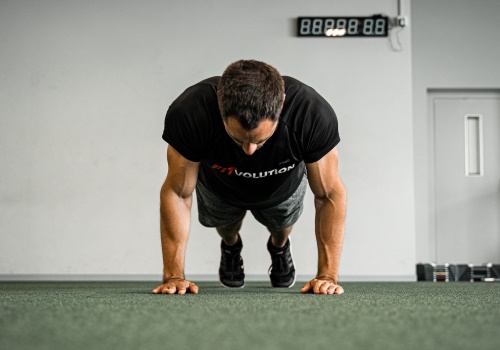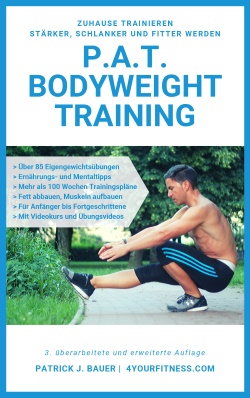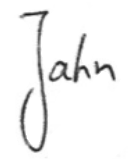Weight training with intensity methods
The current trend is towards weight gain and functional training. Undoubtedly, less enjoyable experiences make training outside the fitness studio more and more socially acceptable.
But despite this, many people have realized some of the benefits of bodyweight training. Many fitness studios now also have small crossboxes or functional areas where weight training and functional training can also be targeted.
Correct, because learning is functional and flexible. You always have your body. So you can train anytime, anywhere, and you don’t need anything but yourself. However, quite effective training is possible. This applies at least up to a certain level of training. Then tools like intensity techniques come into play, which is what this article is about.
Especially for on-the-go or home workouts, bare-metal workouts are the preferred tool for an increasing number of people. After all, not everyone has a bench and a few dumbbells lying around at home. You can even make the whole thing more varied and intense with a few simple and portable tools, such as a slingshot trainer or a pair of Thera * bands.
However, it is currently happening that with some exercise without extra weight, it is not easy to reach your limit in the long run. Especially if you want to train very intensely and build muscle mass, for example, you have to come up with something. The intensity methods discussed below are methods that you can use for this purpose. I have specifically chosen a technique that makes them especially suitable for bodyweight training.

Why Intensity Methods Are Good For Bodyweight Workouts
I have already discussed in another article that you can also build muscle with your own weight. Several years ago, I ran an experiment for six months, the result was better than I expected.
If you continue to train with bodyweight exercises, with a little practice, you can quickly reach areas where you can do a lot of repetitions. Thus, sooner or later you will find yourself in the field of strength endurance. Continuing effective strength training without the use of weights at this point takes some experience and the right approach.
Introducing Hypertrophy Training and Maximum Strength Training becomes a challenge. Depending on the training goal, this can be very sobering because significant increases in strength and muscle mass can no longer be easily achieved. However, you can fix this problem with the right tools and techniques. Basically, you have three things you can do now:
- Adding aids like Thera band or sling trainer
- More advanced exercise options (you can find them in Pat Bauer’s Weight Training Book *)
- Intended use of intensity methods
Ideally, you should combine all three options to get the most out of yourself.
What are Intensity Methods?
Intensive techniques are special training techniques that have been developed in strength training and bodybuilding to increase the intensity of training. Training changes are designed to provide unusual training stimuli. The targeted use of such stimuli can help the trainee make further progress when he reaches a plateau in training. There is talk of a plateau in strength training if, despite great effort, the machine can (no longer) take steps in the right direction.
What methods of intensity are there?
There are many intensity techniques. If you ask Google, you will see huge results on this topic. There you can read a lot about throwing sets, supersets, forced reps, giant sets, negative sets, maximum concentration training, partial reps, and some other types of intensity enhancement.
Some of these methods work very well for crossing plateaus. However, the methods described have one thing in common: they are actually designed for weight training in the gym. They are structured and described accordingly.
However, in this article, I will focus on training that you can do anywhere (even in a hotel, such as hotel room training). I don’t want you to think that you need to train in a specific location or with a lot of weight for your training success (although this can have several benefits).
So the key questions are:
- Which intensity methods are (also) suitable for bodyweight training?
- What is the best way to use intensity techniques for bodyweight training?
The following five methods have emerged that I hope will help you make your weight training even more intense.
Top 5 Intensity Techniques for No Weights Workout
I have done a long and thorough analysis of existing intensity methods to determine the best ones and apply them to my location-independent training program. In this article, I have outlined the most effective methods for this purpose from my experience.
When used correctly, all five options are extremely effective, and it varies from person to person with which intensity technique the best results can be achieved. Therefore, the following order says nothing about efficiency.
I advise anyone looking to make serious long-term progress in bodyweight training not to limit themselves to one of the methods described, but try them all, switch between methods and combine them.
1) Extending TuT (time under stress)
My personal favorite of intensity techniques is prolonging time under stress. This is the time when the muscles are in tension. This technique is sometimes referred to as slow training by some people.
Slower execution of the movement keeps the muscles tense at the same number of repetitions for a longer period of time. As a result, the muscles are already tired with significantly fewer reps. It is also important that the muscles cannot “rest” between reps. Therefore, at the end point of the eccentric movement, there is a direct transition to concentric movement. I find the explanation of how muscles work on sportunterricht.de pretty good.

Do you find the push-ups too easy? Then take it really slow!
For example, if you are already trained, you can do 30 push-ups at a time, then be very careful at your pace. Let’s assume that you concentrate for a second, hold for a second and move eccentrically for a second (1-1-1). Now try to slow down, so that you need three seconds for concentric and three seconds for eccentric (3-0-3).
In any case, pay attention to concentrated, even execution of the movement. You will notice how your muscles are depleted after significantly fewer reps. Slow down the movement enough to exhaust your muscles with the desired number of reps.
Since I would like to write a lot more about the topic of making optimal use of timing techniques in times of tension, there will probably be a separate article in the future.
2) negative sentences
Negative sentences are often confused with passive sentences. While passive sentences are quite unsuitable for bodyweight training, negative sentences can also be used effectively for bodyweight training.
In the case of negative sentences, the eccentric part of the movement is much slower than the concentric part. Basically, negative sentences are a special form of energized time extension. Examples of a move in a negative sentence would be 2-0-5 or 2-0-10. Therefore, the eccentric movement is much longer than the concentric one.
This is how to train until the muscle allows repetitions. When training without weights, you should also choose a speed so that you can simply achieve your desired reps.
3) Supersets
In supersets, two sets end in a row. At the end of one exercise, you switch directly to the next and begin the exercise. The gap between proposals should be really minimal here. Therefore, prepare everything so that you can start another exercise as soon as possible after completing it.
In classic supersets (also antagonistic supersets), opposite muscle groups are trained in supersets. You train chest / back, biceps / triceps, or leg extension / extension together in a superset. For example, you can do push-ups first and then immediately.
This type of antagonist training results in additional muscle stimulation because the antagonist is also involved in every movement.
Eliminating the pause between sentences also saves you time. This, of course, suits us evolutionists, because we have a lot to do and we want to achieve maximum results in the shortest possible time. In my article on Supersets and supernetting training, this is the main focus. However, the impact on training intensity should not be underestimated.
4) Mammoth Speed
Mammoth Sets are like super sets. Here, too, the two exercises are performed in direct sequence and with minimal interruption. However, the same muscle group is trained in giant sets. This is why they are sometimes called agonistic supersets. For example, a combination of pull-ups and callsigns or falls and push-ups in the form of diamonds are possible.
The gigantic proposal addresses various muscle areas to maximize muscle fatigue in a minimal amount of time. Due to their large size, the muscles can be used without additional weight.
Insider Tip: To maximize muscle loading, you should always do the heavier exercises with giant sets first.
5) Concentration
Strictly speaking, the fifth intensity technique is not on this list at all. Rather, it should be the foundation of every workout. Correctly acknowledged, I am not talking about maximum speed of concentration, but about concentration on your workouts and your trained muscles. During training, you should not be distracted and in no case do something on the side, if this prevents you from concentrating as much as possible on the muscles that you want to train.
During training, I always concentrate as much as possible on the muscles that I would like to train during this exercise. This allows me to target my muscles. In this way, you can set the best possible training stimulus in a much conscious way.
Try it yourself. Make as many dips as possible. How much did you earn How is your triceps feeling now?
Take a worthwhile break and try again. Only this time, you concentrate completely on your triceps. Feel your muscles and try to apply as much force as possible with the triceps movement. How many reps did you do this time? How is your triceps feeling now?
The difference between these two attempts should show you how important muscle concentration is to the effectiveness of your workouts.
Unfortunately, many people ignore this. If you’re really only realizing one thing from this article, it is: Make sure you focus on the muscles you want to train with each exercise. You will notice and see the difference! Trust me: the focus is your superpower!
Other Suitable Intensity Techniques
I regularly use the five techniques described above for my workouts. I have found that these methods are best for bodyweight training.
There are other intensity methods. Some are also suitable for training without weights. Examples of such methods are sets of 21 and maximum concentration. However, I don’t find any of them as effective as the methods presented.
conclusion
Now you should know what you need to do to get ahead in weightless training. If your basic bodyweight exercises gradually become too light, then in the future you will simply use intensity methods.
However, it is important that you rely on more than just using intensity methods. It’s not optimal if you always do the same exercises after getting too light. Find new and challenging exercise options to meet new challenges. Then your workouts will not be so boring.
If you really want to do more intense resistance training and learn about such exercises, I can recommend a book from my friend and fellow blogger Patrick Bauer. I don’t know anyone who is so familiar with training without equipment in German speaking countries. It includes 85 video instructions and nine different workout plans. Exclusively for my readers, there is an additional 15% discount on the package.

You also don’t have to completely hide the use of additional learning tools. Especially if you are choosing Thera bands, I recommend using a good pair of training gloves. I like to rip my hands off with ribbons.
Good luck and success in your training!

And don’t forget: your health is your health.
